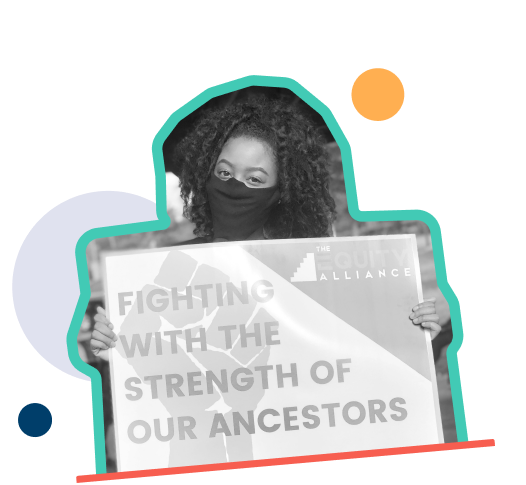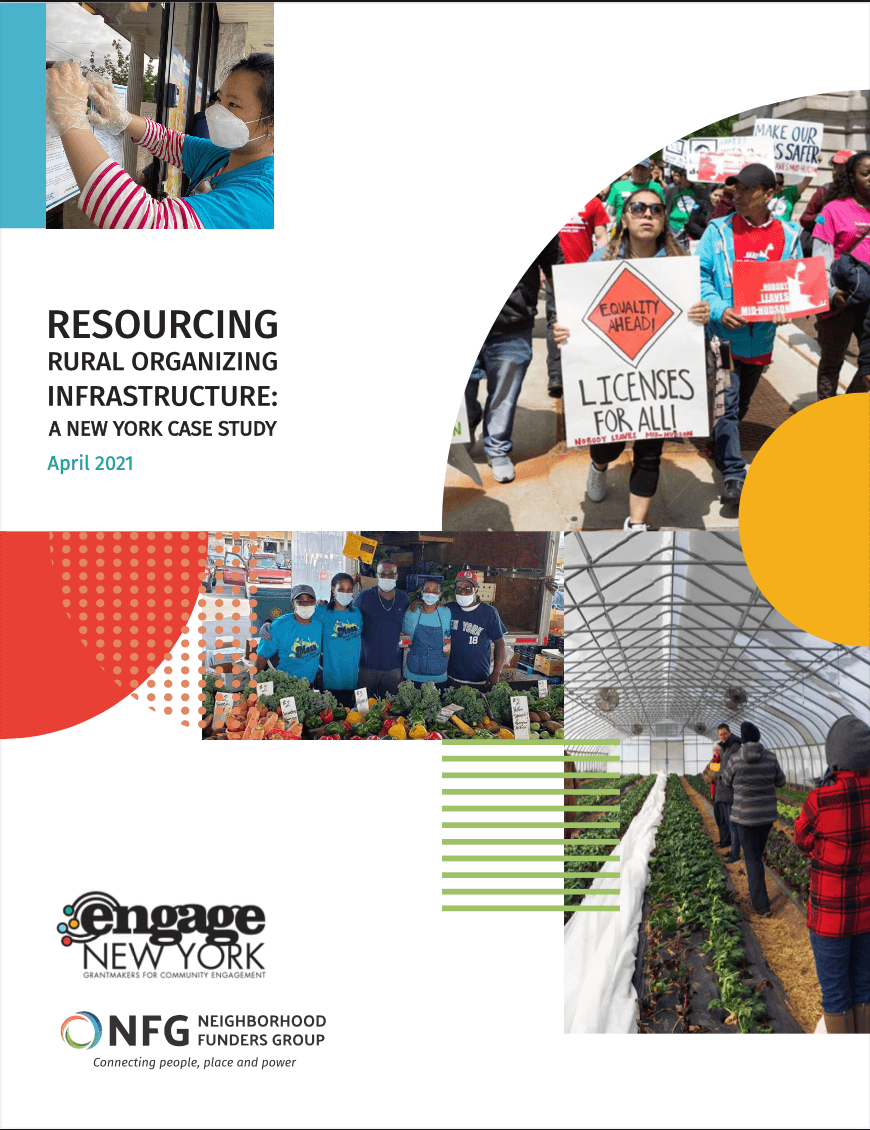

New York State’s progressive movement has accomplished much in recent years, including passage of the Driver’s License Access and Privacy Act (Green Light NY), the Farm Laborers Fair Labor Practices Act (FLFLPA), and the Climate Leadership and Community Protection Act (CLCPA). These three examples demonstrate the capability of people- powered movements to effect social change. Achieving equitable outcomes through policy implementation and enforcement will require robust organizing infrastructure throughout all regions of New York State. The ability to grow and sustain a progressive movement in New York State will depend on the strength of organizing infrastructure in rural communities and the grassroots groups that organize within those rural communities.
While nearly one in five Americans lives in a rural community, less than 6 percent of philanthropic dollars is invested in these communities. Of that small amount, only a fraction of those resources is directed to supporting community organizing work, particularly that led by and serving Indigenous, Black and rural communities of color. Research shows that the key to improving the conditions for communities impacted by injustice is by investing in community organizing, a practice that most funders do not fund. The intersections of racial inequities; persistent poverty; lack of access to healthcare, education, transportation, and quality employment; and the impacts of a changing climate are experienced in compounded and disproportionate degrees by rural people.
NFG’s Integrated Rural Strategies Group (IRSG) and Engage New York have partnered to commission a landscape scan of New York State's community organizing infrastructure to inform, connect, and mobilize funders to shift how philanthropy is resourcing rural communities. The scan's findings are now published in a new report on rural organizing and power building: Building Rural Organizing Infrastructure: A New York Case Study. The report includes analysis of the role of rural communities in designing, implementing, and enforcing progressive statewide policy change; and a comprehensive set of recommendations for funders to resource this critical work.
It is our hope and goal that this report serves as a guide – an action agenda – for funders. We offer it as a tool to deepen philanthropy’s understanding of the landscape and context in which rural communities can, and should, participate in the design, implementation, and enforcement of people-centered policies to address the inequities faced by rural Americans.
To help build the infrastructure for transformational change, funders should prioritize:
- allocating multi-year, general operating grants that fill regional and other gaps in rural community organizing and base-building work,
- addressing the technical assistance and capacity-building needs of rural organizers, and
- helping rural organizers connect to or build statewide tables to advance the progressive movement across New York. To do this well, funders will need to deepen their understanding of place and community across rural New York; structure grants to help build power from the bottom up; and coordinate and align grantmaking across a network of funders to build end-to-end infrastructure for people-powered progressive movements.
Most importantly, funders must ensure that grantmaking to increase equity is in itself done fairly. Grassroots organizations that are rural, led by people of color (POC), or just newer face challenges in accessing funding. Evidence shows that funding cycles reinforce legacy policy and advocacy organizations, which are often urban- based and white-led, at the expense of rural, POC-led and newer organizations. When this occurs, it often sidelines the importance of lived experience and fails to center the work on the communities most impacted by injustice. Every effort should be made to create on-ramp opportunities for underrepresented rural, POC-led, and newer grassroots organizations to achieve sustainable funding for their long-term work.
The report is divided into five sections to allow the reader to process the information, dissect the findings and develop questions relevant to your own foundation as it considers ways to adopt the report’s recommendations. We encourage you to use this report to consider how your foundation might change its policies, approaches, and grantmaking so that leaders in rural communities have the resources, tools, and relationships to address the needs in their communities. To achieve this, we call on foundations to create deeper bonds with rural leaders via authentic relationships and equitable access to funding opportunities, technical assistance resources, and participation in statewide tables.
NFG, through its Integrated Rural Strategies Group, and Engage New York are committed to supporting philanthropy to actualize the findings and recommendations presented here. While this report uses rural organizing infrastructure in New York State as a case study, its contents are readily adaptable for funders doing work nationally or with a place-based focus elsewhere. It is our intention to develop complementary resources, toolkits, and programming to build a community of practice for funders across the country to put this report’s words into action. We know your foundation cares about democracy, equity, and justice. There is an urgency to this work. We invite you to join us to learn, build relationships, and take action in support of thriving rural communities.

